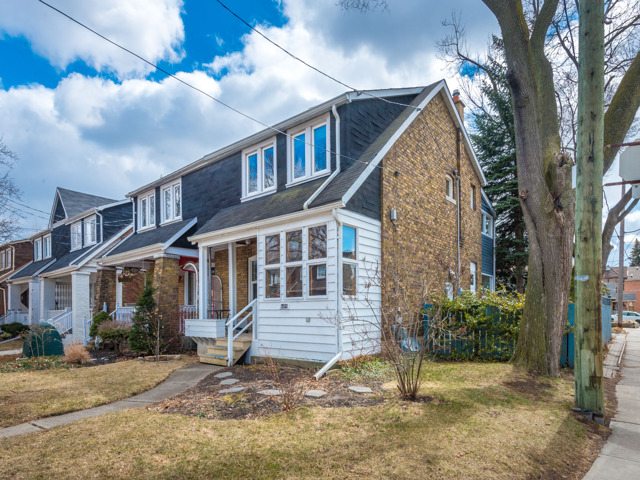written by CAROLYN IRELAND
The Globe and Mail
Published Wednesday, May 02, 2018
Young buyers in the Toronto-area real estate market seem to be taking rising mortgage rates and “stress test” in their stride. It’s the intense competition in downtown areas that often creates anxiety.
But real estate agents say buyers are finding ways to fight those headwinds.
Alex Beauregard of Freeman Real Estate Ltd. says the ferocious ice storm that hit Toronto on an April weekend kept hordes of potential buyers at home.
Driving conditions were so dangerous throughout the Greater Toronto Area that many open houses were virtually empty, Mr. Beauregard says. He knows because his own listing in the midtown Davisville area was one of them.
But a storm that worked against him as a listing agent was the break his buyer clients needed when Mr. Beauregard prompted them to pounce on a house for sale while their competitors were still hacking out from under the ice.
The couple loved a house listed for $899,999 in Toronto’s Junction neighbourhood, but they figured it would spark a bidding war and sell for a price well beyond their budget.
But Mr. Beauregard kept an eye on the progress of the sale at 168 Gilmour Ave. and saw that the house did not sell on the Monday night, which was the deadline for submitting offers. On Tuesday morning, it was relisted with an asking price of $929,999, with offers welcome any time.
Mr. Beauregard knows the jitters sellers feel when an offer night comes and goes. He wanted to move quickly to seize the opportunity.
“If we get no offers on offer night, the stress level goes up exponentially,” he says. “I was hoping for that.”
Mr. Beauregard suggested his clients submit an offer for $930,000. He made it irrevocable for one hour – between 5 p.m. and 6 p.m. on Tuesday evening.
“I couldn’t see giving it more time – it would have been to our detriment.”
In fact, he did hear from the listing agent that two other bidders were begging for more time. But Mr. Beauregard held fast. The sellers accepted the offer.
Mr. Beauregard says the buyers feel the ice storm turned out to be a bit of good fortune for them. A similar house recently sold for $1,070,000, he adds.
Mr. Beauregard’s Davisville listing, meanwhile, was still on the market last week. The semi-detached, three-bedroom house at 609 Millwood Rd. was listed with an asking price of $1.3-million.
Mr. Beauregard relisted the house with an asking price of $1.439-million.
Back in February, he adds, similar homes were selling for between $1.5-million and $1.6-million.
He says that the week before he first listed the property, there was only one other nearby house for sale. The same day he listed, seven competing sellers did as well, “in effect flooding the market,” he says.
Mr. Beauregard says that type of fluke is difficult to predict and the market is unpredictable as a result.
In popular downtown neighbourhoods such as the Junction, Christie Pits and Leslieville, properties are typically selling with multiple offers, he says. But areas slightly farther afield are quirky.
A recent report by Royal LePage found that the average Canadian “peak millennial’s” purchasing power dropped by approximately 16.5 per cent, or $40,103, after the introduction of tighter mortgage rules on Jan. 1.
For this study, Royal LePage considers “peak millennials” to be people born between 1987 and 1993.
In major cities across Canada, the potential buyers in this age range typically need to save, pool their money with a partner, and/or borrow funds from their parents, the report says. Many parents are downsizing in retirement and can financially contribute to their child’s first home purchase, according to Royal LePage.
Al Daimee, a real estate agent with Royal LePage Signature Realty, encourages buyers to ignore offer dates and pressure the sellers with a bully offer instead.
He says the bully bid – also known as a pre-emptive offer – should be for an amount far enough above the asking price that the sellers are tempted, but not so far that the buyers are overpaying. About $200,000 is often a good number, he says. When he’s representing buyers, he wants to get into the head of the listing agent.
“Your goal as the buyers is to offer enough to create some doubt in their mind.”
The strategy only works when sellers are willing to look at pre-emptive offers. Some state in the listing that they will not.
The risk for the buyers is that they are making an offer without knowing how many other possible bidders there are.
“It’s not for everybody. You have to have a strong stomach for it.”
Mr. Daimee has been working with a young couple who are keen to buy a house in Toronto’s Leslieville neighbourhood. The bidding was so intense that they took a break for a while as they waited for an expected income bump, he says.
That materialized as expected, but by then their segment of the market was even more competitive because the mortgage stress test pushed a number of buyers down into their price range.
Originally, the couple was looking at properties in the $850,000 range, he says. They were eventually able to increase their budget to $1-million, but by then most of the houses they liked were going for $1.050-million.
Finally, the couple caved and asked their relatives for help. The parents were fully willing to do so, Mr. Daimee says.
“Now they’re coming in with renewed vigour,” the agent says.
Mr. Beauregard says tighter mortgage rules and rising interest rates do not seem to be deterring young buyers, who are often receiving help from their parents.
“The bank of mom and dad is still strong.”

